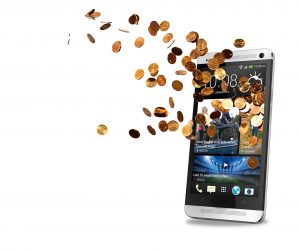
The Monetisation of NaviGap
The monetisation models that are commonly used in popular Apps have been identified to help guide us through the best model for NaviGap.
Model 1- Freemium – Used by LinkedIn, Spotify, Evernote
Freemium is a model where the application is free, but has upgrading options and locked features that customers can to choose to pay for. It is becoming increasingly popular as it is so easily adapted to any app. A similar option to this is offering a limited time trial of a freemium service to get people through the door and wanting to upgrade to the paid accounts.
Pros
- Users who ‘try before they buy’ are more likely to become engaged and buy it later.
- Allows developers to generate a large user base with the view of up-selling.
Cons
- If there are not enough features for free, the users may drop off
- If too many features are for free, no one will want to upgrade.
Model 2 – Subscription – Used by Whatsapp, Apple Music, Netflix
In this model the Apps are free but the content needed to gain value from the service is locked and requires payment in the form of a Weekly, Monthly, OR Annual subscription. There is usually a limited time free trial for the service. The subscription price is usually smaller than the one-time price to incentivise the user into a longer term commitment.
Pros
- Constant revenue stream
- Loyal app users
Cons
- It hard to determine just how much content to provide for free.
- Subscription requires a commitment from a first time user.
Model 3 – Sponsorship – Used by Runkeeper, Menulog, Pinterest
Sponsorship is a monetisation method which offers advertising space to brands within the app, who then offer exclusive deals and discounts to app users.
Pros
- The developer gets money from the sponsor.
- The customer gets exclusive discounts and offers.
Cons
- The app needs to have a strong brand behind it to convince sponsors of value.
Model 4 – In-app purchases – Used by Candy Crush, Tinder, Snapchat
Users can choose to buy extra functionality, tools, features and content. For example, Snapchat generate a revenue stream through the small % of users who would want to replay a snap more than once (£0.99).
Pros
- Minimal risk in implementing this model.
- Buying features typically lead to better user engagement.
Cons
- The app stores will take 30% of the profits from in-app products
- Users may be less inclined to download your app if they see that it includes in-app downloads
Model 5 – In-app advertising – Used by Facebook, Google, YouTube
The App is Free to download but comes with advertising within the app.
Pros
- Works well if your app is a new concept to the market because you can develop a large user base and collect data on them.
Cons
- Generates quite small revenue per user. According to Monetize Pros, most developers will only generate $1.50 per thousand impressions of their ads.
- Reputation for being annoying and disruptive to the user experience.
Calculating potential ad revenue from mobile ads:
Cost Per Install CPI: You get paid for every time someone installs the app that’s being advertised after clicking on an ad in your app – provided that an app IS being advertised.
Cost Per 1000 Impressions CPM: An Impression is the number of times the ad has been seen. One impression means the ad has been seen one time.
Which monetisation model will best fit NaviGap?
Points JAMR considered:
- What is your user’s overall goal during an app session and so how will each monetisation model impact them achieving that goal?
- What industry is our app in and how would user experience be compromised as a result of each of the monetisation models?
- Are there likely to be any drop-off points when we could prompt users with a well timed freemium ad or in-app purchase of premium content?
- What type of ad will genuinely be most helpful to users, what are our user’s needs? What kind of advertising, extra features, or brands would our users enjoy being exposed to?
- What monetisation models do our competitors use?
- Are there any potential partnerships we can leverage?
Conclusion:
NaviGap will develop a blend of In App purchases and In App advertising models. This is because it is primarily an online social network, users will log in with a profile generating a lot of useful user data and since we hope to engage users for prolonged periods and on a regular basis, we can target suitable and valuable In App advertising from travel based providers that can offer flights, accommodation, tours, equipment and accessories specific to the audience needs. There are a number of brands that users of a travel companion site would find of use, for example: STA travel, The Stoke Travel Company, Trtl travel pillows and EastPak luggage.
NaviGap will be providing users with interactive maps and travel guides meaning that an In-App purchase model is also very suited. The App itself will be free and come with full user functionality as an online social network, alongside a generic map and one location guide. Users can then purchase additional specific maps and guides to suit their needs.
